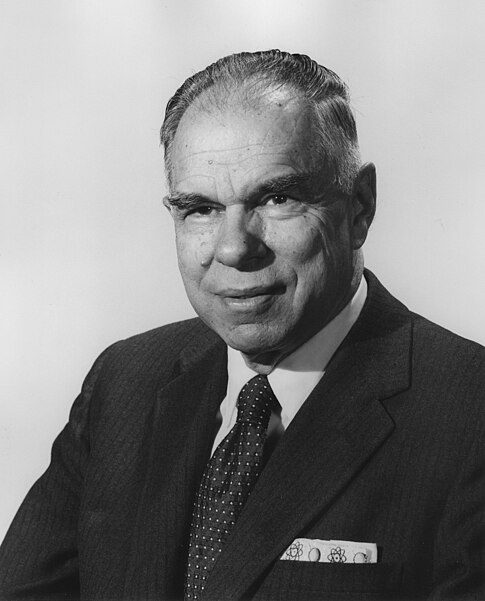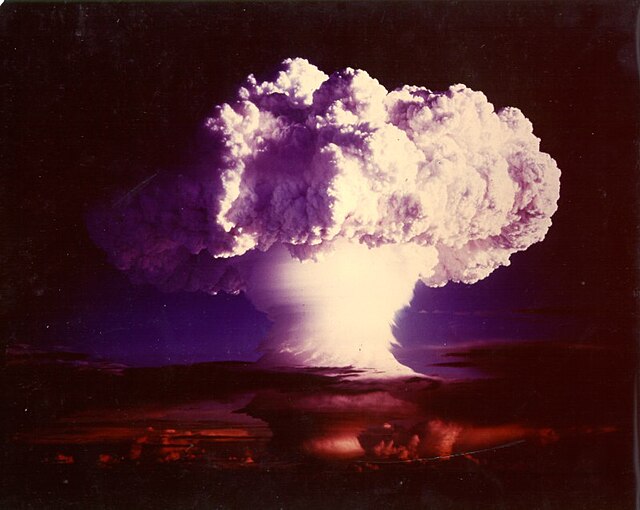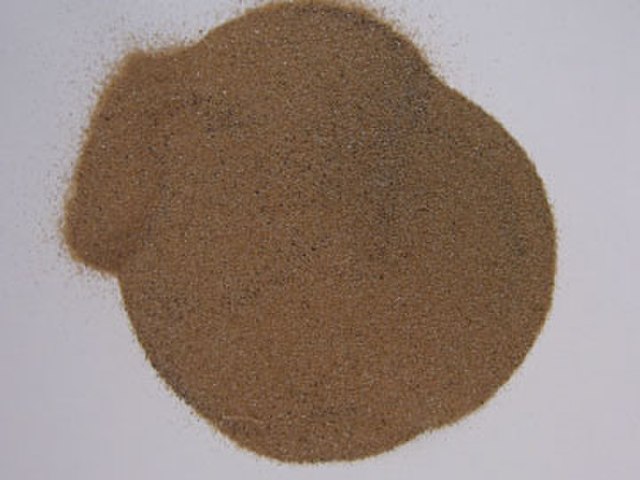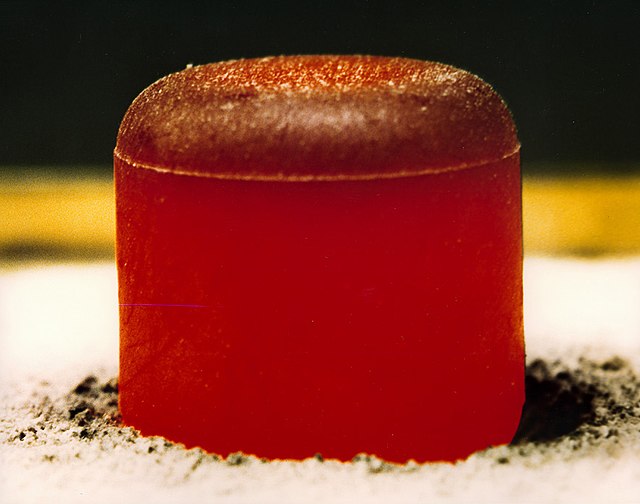Curium is a synthetic chemical element; it has symbol Cm and atomic number 96. This transuranic actinide element was named after eminent scientists Marie and Pierre Curie, both known for their research on radioactivity. Curium was first intentionally made by the team of Glenn T. Seaborg, Ralph A. James, and Albert Ghiorso in 1944, using the cyclotron at Berkeley. They bombarded the newly discovered element plutonium with alpha particles. This was then sent to the Metallurgical Laboratory at University of Chicago where a tiny sample of curium was eventually separated and identified. The discovery was kept secret until after the end of World War II. The news was released to the public in November 1947. Most curium is produced by bombarding uranium or plutonium with neutrons in nuclear reactors – one tonne of spent nuclear fuel contains ~20 grams of curium.
Curium
Glenn T. Seaborg
The 60-inch (150 cm) cyclotron at the Lawrence Radiation Laboratory, University of California, Berkeley, in August 1939.
Several isotopes of curium were detected in the fallout from the Ivy Mike nuclear test.
The actinide or actinoid series encompasses at least the 14 metallic chemical elements in the 5f series, with atomic numbers from 89 to 102, actinium through nobelium. The actinide series derives its name from the first element in the series, actinium. The informal chemical symbol An is used in general discussions of actinide chemistry to refer to any actinide.
Enrico Fermi suggested the existence of transuranium elements in 1934.
Glenn T. Seaborg and his group at the University of California at Berkeley synthesized Pu, Am, Cm, Bk, Cf, Es, Fm, Md, No and element 106, which was later named seaborgium in his honor while he was still living. They also synthesized more than a hundred actinide isotopes.
Monazite: a major thorium mineral
A pellet of 238PuO2 to be used in a radioisotope thermoelectric generator for either the Cassini or Galileo mission. The pellet produces 62 watts of heat and glows because of the heat generated by the radioactive decay (primarily α). Photo is taken after insulating the pellet under a graphite blanket for minutes and removing the blanket.







